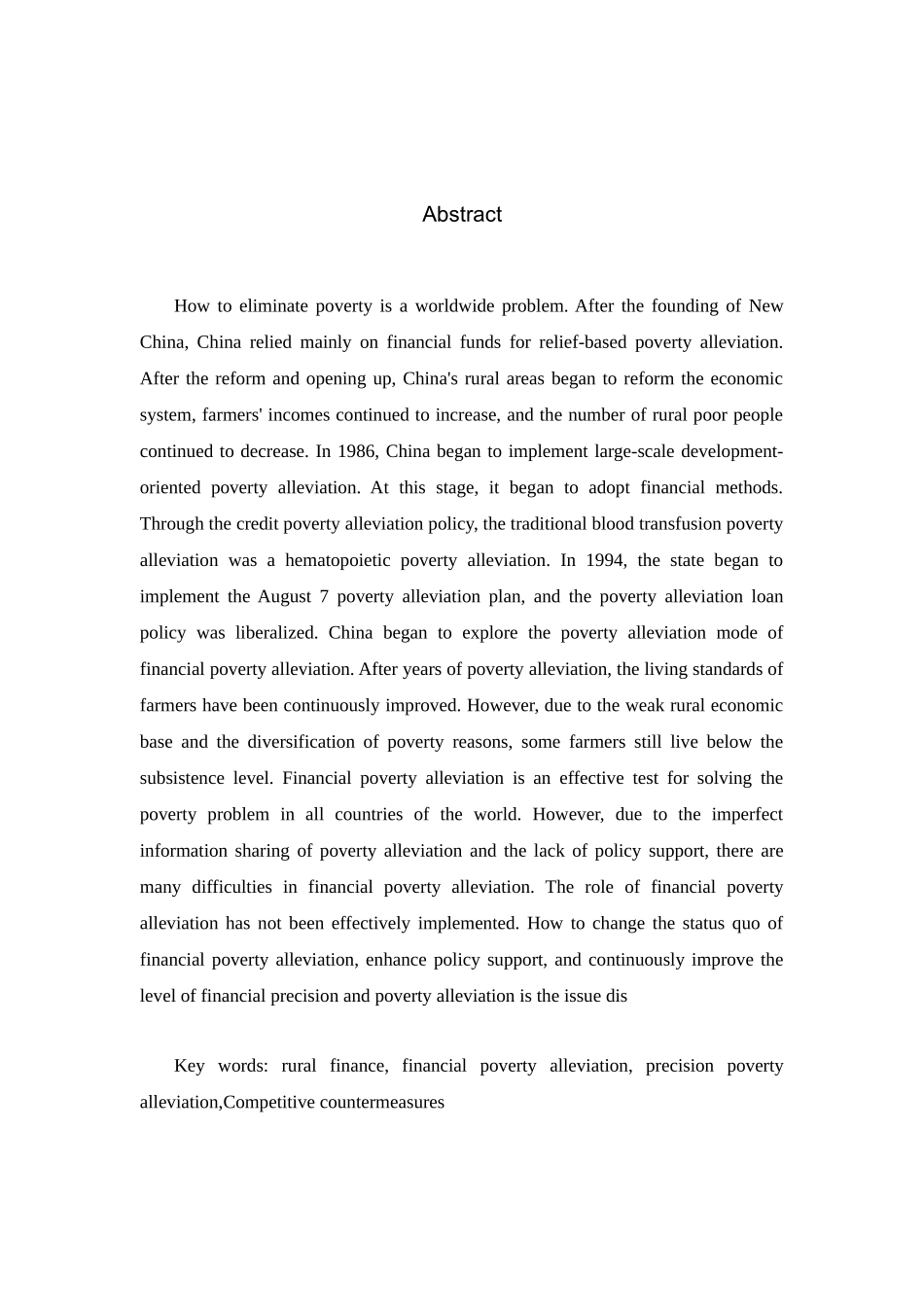我国金融扶贫中的现实困境与竞争对策分析摘要如何消除贫困是世界性的难题。新中国成立后,我国主要依靠财政资金进行救济式扶贫。改革开放后,我国农村地区开始进行经济体制改革,农民的收入不断增加,农村贫困人口数量不断减少。1986 年我国开始实施大规模的开发式扶贫,在此阶段开始采用金融方式,通过信贷扶贫政策,变传统的输血式扶贫为造血式扶贫。1994 年国家开始实施八七扶贫攻坚计划,扶贫贷款政策放开我国开始初步探索金融扶贫这一扶贫方式。经过多年扶贫,农民的生活水平不断提高,但因农村经济基础薄弱和贫困原因的多样化,仍有部分农民生活在温饱线以下。金融扶贫是世界各国解决贫困问题的有效偿试。但由于扶贫信息共享不完善、政策支持力度欠缺等诸多原因,导致金融扶贫存在许多难点,金融扶贫作用未能有效发挥。如何改变金融扶贫现状,增强政策支持力度,不断提升金融精准扶贫水平是本文探讨的问题。关键词:农村金融;金融扶贫;精准扶贫;竞争对策AbstractHow to eliminate poverty is a worldwide problem. After the founding of New China, China relied mainly on financial funds for relief-based poverty alleviation. After the reform and opening up, China's rural areas began to reform the economic system, farmers' incomes continued to increase, and the number of rural poor people continued to decrease. In 1986, China began to implement large-scale development-oriented poverty alleviation. At this stage, it began to adopt financial methods. Through the credit poverty alleviation policy, the traditional blood transfusion poverty alleviation was a hematopoietic poverty alleviation. In 1994, the state began to implement the August 7 poverty alleviation plan, and the poverty alleviation loan policy was liberalized. China began to explore the poverty alleviation mode of financial poverty alleviation. After years of poverty alleviation, the living standards of farmers have been continuously improved. However, due to the weak rural economic base and the diversification of poverty reas...


